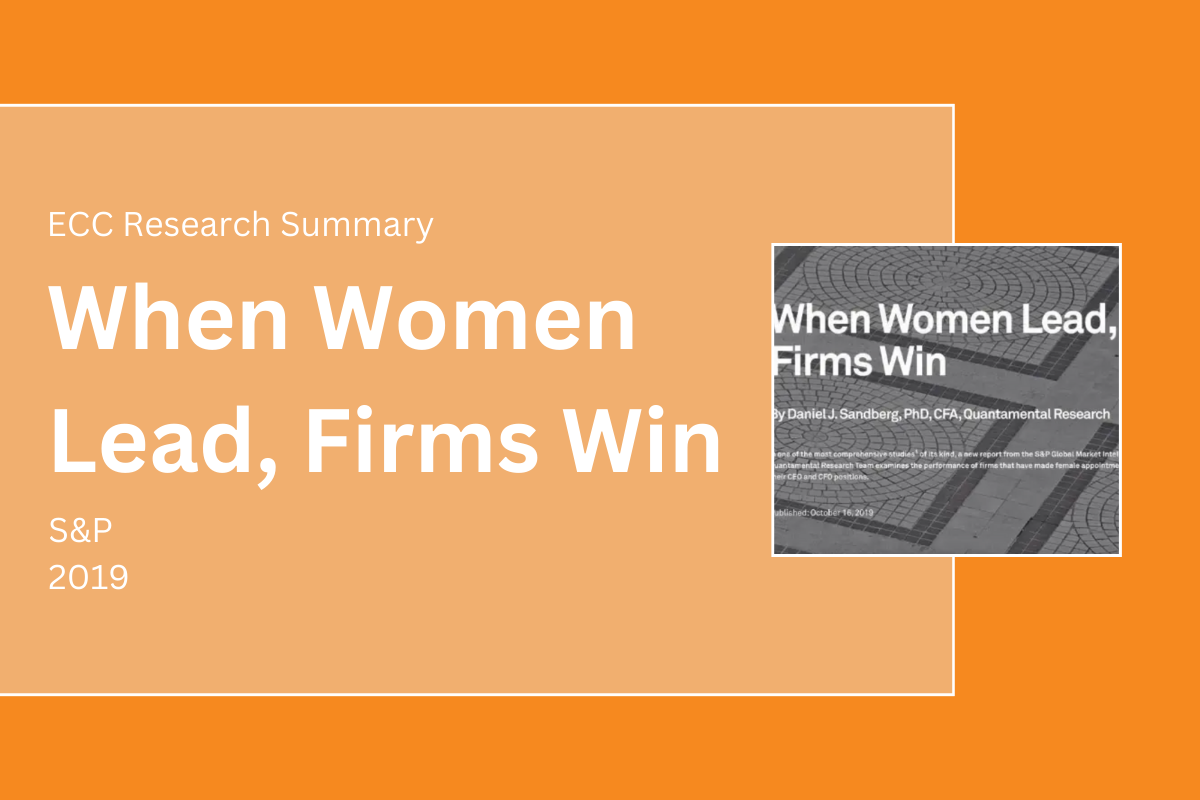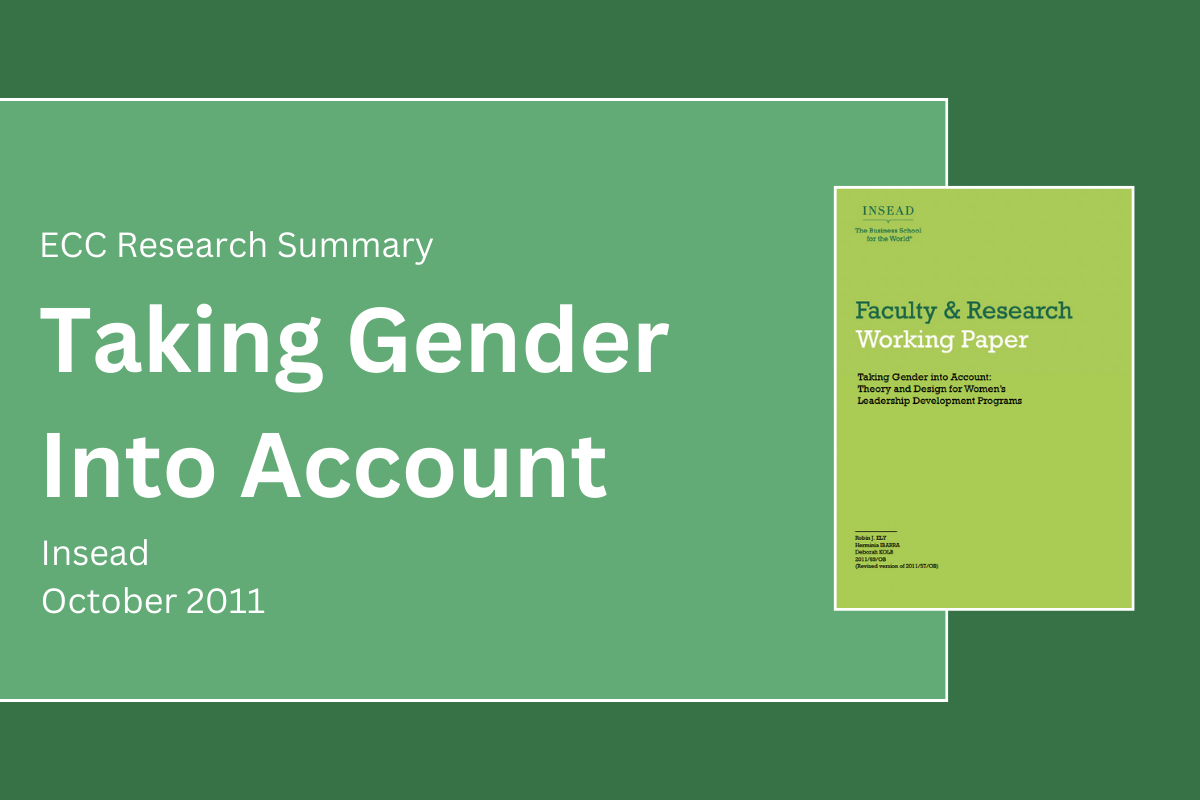3 min read
Taking Gender into Account Summary
A Summary of the Workplace Biases Women Face Leadership programmes have become a key component of the development opportunities major...
Insights to help leaders and organisations thrive and drive growth & inclusion.
Geraldine Gallacher Keynote Speaker
Speaker, podcaster, author and master coach.
Our resource hub for working parents, carers and managers navigating work-life balance.
Real stories from leaders driving inclusion & equity in today’s shifting world.
Fortnightly insights on leadership, equity & the future of work. For senior leaders & curious thinkers.
A monthly digest of the shifts shaping how we lead and work.
2 min read
 Phoebe Rees | Research & Impact Manager
:
Sep 11, 2024 9:21:46 AM
Phoebe Rees | Research & Impact Manager
:
Sep 11, 2024 9:21:46 AM

The Ongoing Gap in Senior Leadership Representation
Despite the rise in gender diversity conversations, women continue to be significantly underrepresented in senior leadership roles. To understand the value women bring when they do reach the top, S&P Global undertook a study to analyse the financial performance of companies led by women. Drawing from a dataset of over 6,000 public companies across the Russell 3000 Index, the research looked specifically at firms with female CEOs and CFOs over a 17-year period, analysing the impact of female leadership on profitability, stock performance, and governance.
The Financial Impact of Women in Executive Roles
The analysis revealed a clear trend- companies led by women outperformed their peers on several key financial measures. Companies with female CEOs experienced a 20% rise in stock price momentum within two years of the appointment, an indicator of growing investor confidence. Those with female CFOs reported 6% higher profitability and 8% better stock returns post-appointment. Over the course of the study, companies with women in CFO roles generated $1.8 trillion in excess profits. These outcomes speak not just to competence, but to a distinct financial edge associated with female leadership.
Female Leadership and Organisational Culture Change
Beyond performance metrics, the research also uncovered a shift in organisational culture. Firms led by female CEOs had nearly twice the number of women on their boards compared to the market average, suggesting that women in top roles may catalyse broader governance changes. This ripple effect reinforces the idea that diverse leadership fosters more inclusive decision-making, ultimately enhancing business outcomes.
Challenging Leadership Stereotypes with Data
The data directly challenges persistent stereotypes around leadership risk and readiness. Far from being conservative placeholders, these women were instrumental in driving transformation and outperforming market expectations. Their leadership was defined not by caution, but by measurable impact.
Building a Pipeline for Future Female Leaders
The implications are clear- advancing women into leadership roles is not merely a matter of equity—it is a business imperative. But unlocking this potential at scale requires more than symbolic gestures. Organisations must actively identify, develop, and sponsor high-potential female talent. This means confronting ingrained biases, re-evaluating traditional markers of leadership readiness, and ensuring that pathways to advancement are both visible and accessible.
The Bottom Line: Companies Win When Women Lead
When women lead, businesses don’t just benefit—they outperform. But realising this advantage requires deliberate action, not passive intention.
To read more research summaries on how to tap into women talent, visit:
Women’s Progression in the Workplace
Click here to learn more about Women’s Development Programmes: 6 Lessons from Designing Women’s Development Programmes
Click here to learn more about Inclusive Leadership: Intro to Developing Inclusive Leaders

3 min read
A Summary of the Workplace Biases Women Face Leadership programmes have become a key component of the development opportunities major...

1 min read
What does the Double Bind mean for women in the workplace? This concept has been used for decades in social psychology, but in application to...

2 min read
A Summary of the Promotion Bias Women Face Despite the strong performance of women in the workplace, their progression into senior roles...